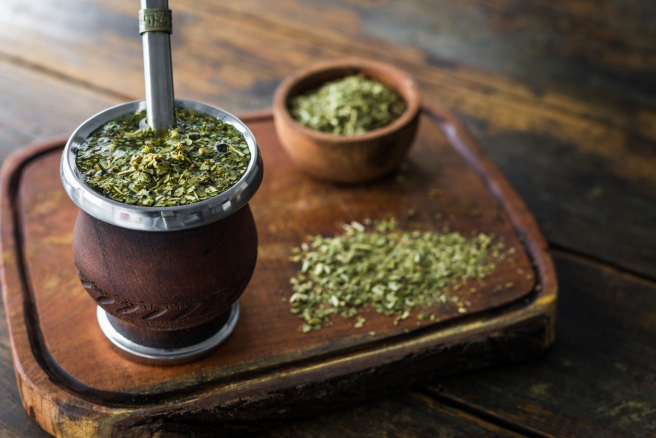How to prepare a delicious mate?
Are you ready to embark on a journey that tantalizes your taste buds, sparks conversations, and brings people together in an enchanting ritual? If so, it’s time to dive headfirst into the captivating world of mate a tradition steeped in history and culture, waiting for you to explore. Get ready to prepare your mate!
Embarking on the preparation
🌱☕️ There’s something truly magical about sharing a cup of mate, a cherished South American tradition that brings people together. Whether you’re new to the world of mate or seeking to perfect your preparation technique, this guide will walk you through the steps to create a delightful and authentic mate experience. So grab your mate straw and let’s dive into the art of preparing mate!

How to prepare your mate
Follow the step by step
Step 1: Gather Your Supplies
🫖 To start your mate journey, you’ll need a few essential items: a mate gourd (a hollowed-out container), a bombilla (a metal straw with a filter), yerba mate leaves (dried leaves of the Ilex paraguariensis plant), and a thermos with hot water. Make sure your mate gourd and bombilla are clean and seasoned to enhance the flavor. That’s all you need to prepare a mate
Step 2: Fill the Mate Gourd
🫐 Carefully fill your mate gourd about two-thirds full with yerba mate leaves. Tilt the gourd slightly and add the yerba to one side. Gently shake it to create a slope, with the yerba higher on one side and lower on the other.
Step 3: Settle the Yerba
🌱 Before inserting the bombilla, give the yerba a gentle tap with your palm to create a compact layer. This will create a filter and prevent clogging the bombilla with fine particles.
Step 4: Insert the Bombilla
🕊️ Insert the bombilla into the side of the mate gourd with the lower level of yerba. The filter end should be just above the yerba to avoid clogging. Ensure a snug fit to prevent leakage.
Step 5: Heat the Water
🔥 Heat water to a temperature of around 150-160°F (65-70°C). It’s essential not to use boiling water, as it can scald the leaves and result in a bitter taste.
Step 6: Pour the Water
🌊 Slowly pour the heated water into the mate gourd, aiming for the empty side where the yerba is lower. The water will gradually moisten the yerba and release its flavors.
Step 7: Sip and Enjoy
🍃 Once the water is added, give the mate a moment to absorb the water before taking your first sip. Place your lips on the filtered end of the bombilla, hold the mate gourd slightly tilted, and sip. Allow the mate to linger in your mouth for a moment to savor its unique taste.
Step 8: Refill and Share
♨️ As you enjoy your mate, you’ll notice the flavor evolving with each refill. When the flavor starts to weaken, it’s time to refill the mate gourd with hot water. Don’t be surprised if your mate circle grows, as sharing mate is a cherished social ritual.
Conclusion: 🌿☕️ To prepare mate is more than just a beverage; it’s a cultural experience that fosters connection and community. By following these steps, you’ll not only master the art of preparing mate but also become part of a tradition that spans generations. So, gather your friends, steep your mate, and embark on a journey of flavors and camaraderie that’s truly unforgettable. Salud! 🥂
Differences to prepare mate and tea
🍵 Exploring the Art of Tea Preparation: A Contrasting Guide to Mate 🫖
While both mate and tea are cherished beverages enjoyed around the world, they each have their unique rituals and methods of preparation. Let’s delve into the delightful differences between preparing mate and preparing tea, offering you a fascinating glimpse into two distinct traditions.
- Ingredients and Utensils: Mate: Yerba mate leaves, a mate gourd, and a bombilla (metal straw).Tea: Tea leaves (from various plant species like Camellia sinensis), a teapot or infuser, and teacups.
- Vessel Selection: Mate: The mate gourd, traditionally made from a hollowed-out gourd, provides a vessel for both brewing and drinking.Tea: Teapots, infusers, and cups are commonly used for brewing and serving tea.
- Preparation Process: Mate
- Fill the mate gourd two-thirds full with yerba mate leaves, creating a slope.Insert the bombilla into the yerba, ensuring a snug fit.Slowly pour hot water into the gourd, allowing the leaves to steep. Sip through the bombilla, adding more water as needed for refills.
- Preparation Process: Tea
- Heat water to the recommended temperature based on the type of tea (e.g., black, green, herbal).
- Place tea leaves into a teapot or infuser.
- Pour the hot water over the leaves and allow them to steep for the specified time.
- Pour the brewed tea into cups for serving.
- Temperature and Steeping Time: Mate: Hot water around 150-160°F (65-70°C) is used, and mate can be refilled and steeped multiple times.Tea: Different types of tea require varying water temperatures and steeping times (e.g., black tea at 200°F for 3-5 minutes, green tea at 175°F for 2-3 minutes).
- Flavor and Experience: Mate: Known for its bold, earthy flavor with herbal undertones, mate offers a communal experience and encourages conversation.Tea: Tea encompasses a wide range of flavors, from delicate and floral to robust and astringent, and often provides a calming, reflective atmosphere.
- Cultural Significance: Mate: Deeply rooted in South American culture, mate is a symbol of hospitality and friendship, often shared in social settings.Tea: Tea ceremonies and traditions vary across cultures, such as the elaborate Chinese gongfu cha or the serene Japanese tea ceremony.
Conclusion
In essence, both mate and tea offer diverse experiences that celebrate taste, culture, and connection. Whether you choose to embrace the vibrant, communal nature of mate or savor the refined elegance of tea, each sip provides a window into the rich tapestry of human traditions and flavors. So, whether you’re team mate or team tea, the world of steeped delights beckons you to explore and savor its intricacies. 🍃🫖🍵

